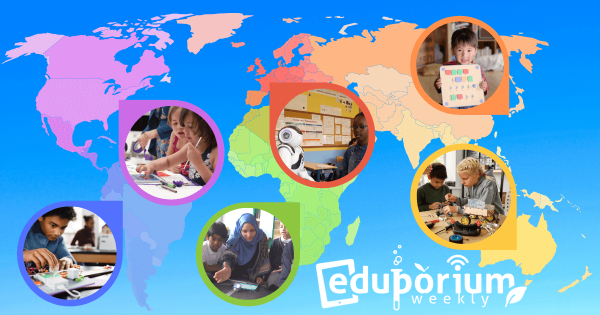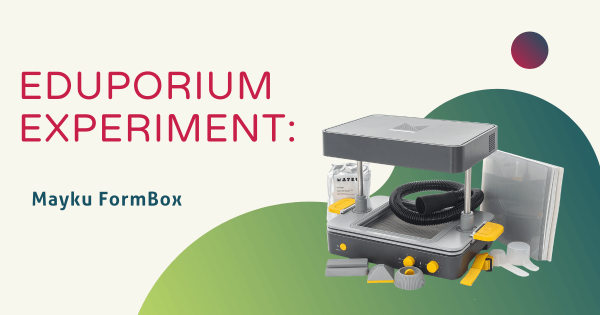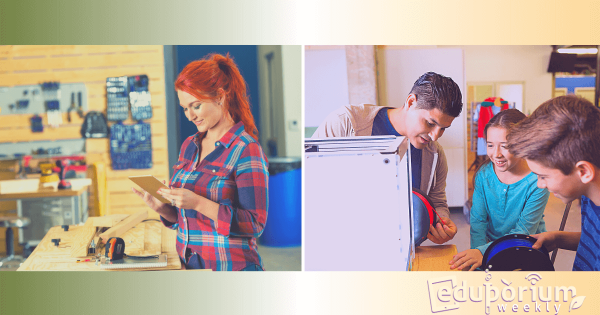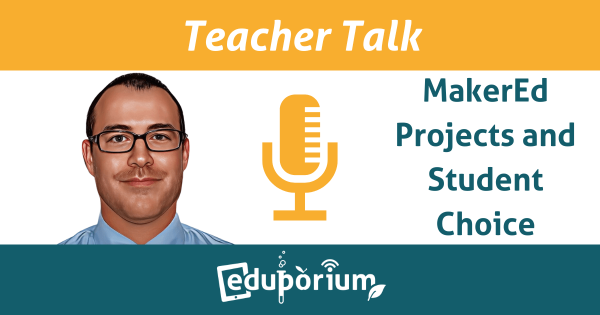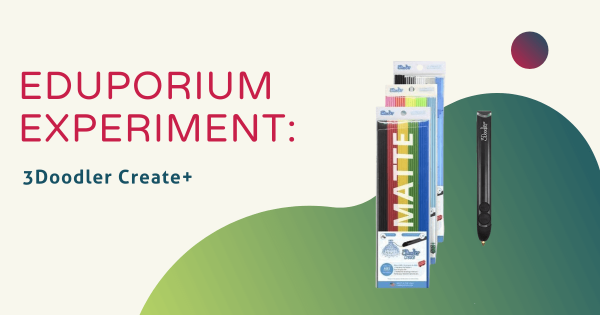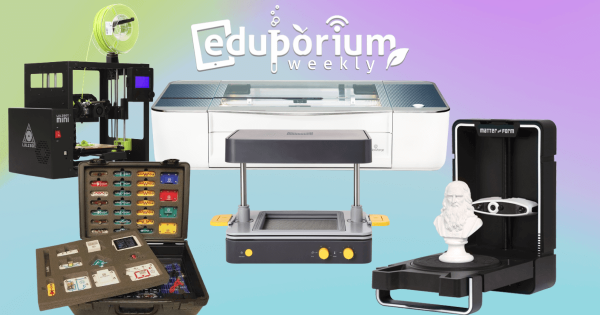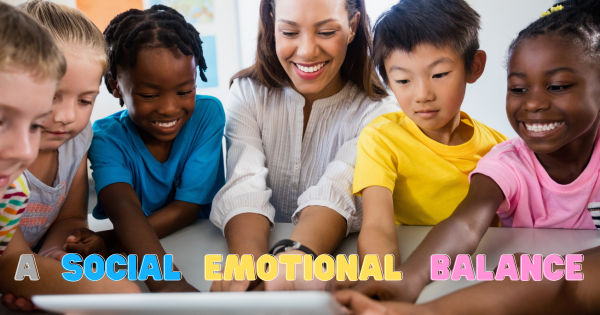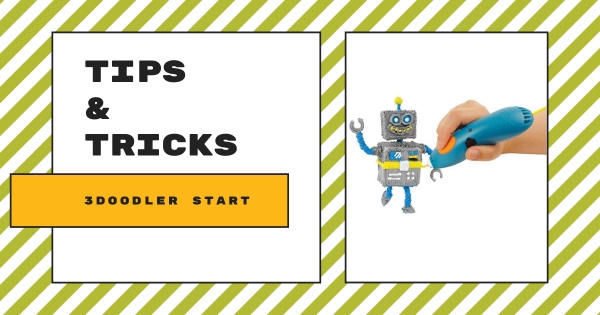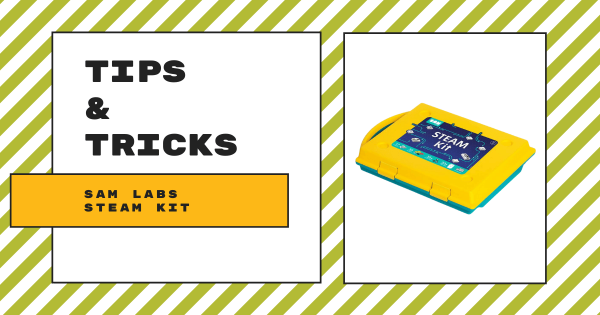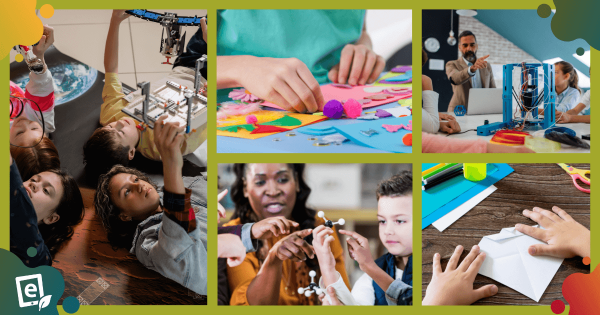Now a phenomenon that’s reached global levels, the Maker Movement has brought so many creative people together. Now, as that spirit has found its way into countless schools, classrooms, and libraries, it is also helping out educators with finding fresh ways to excite students and empower them to learn and express themselves through perseverance and project design.
Maker Ed
Maker Ed has rapidly evolved into a big and important component of 21st century learning. Born out of the culturally impactful Maker Movement, maker education involves providing students with opportunities for hands-on construction, investigation, problem solving, collaboration, and more—all with this community-centric approach. In Maker Ed, students often excel with new types of opportunities to showcase their skills or to develop new ones. With so many potential projects to work on in the classroom or in school makerspaces, adding purposeful, hands-on work to the school day is very effective and inspiring. And, more importantly for educators, there's no wrong way for them to go about introducing maker education. It can be as complex as using various advanced 3D printers or as simple as building with popsicle sticks.
Aside from the likelihood of positively impacting students, Maker Ed is also popular because of its real-world connections. Not only can children further develop key technical skills, maker opportunities also help them to bolster some top soft skills. Making typically involves a lot of collaboration and this is especially true as students move into middle or high school. With unique, fluid opportunities, kids can simultaneously work on bolstering communication, teamwork, and other soft skills in the process. Plus, whether they are using classroom 3D printers, CNC machines, or even low-tech tools, they'll grasp a better understanding on using technology for good as well. Some solid product lines across Maker Ed are 3Doodler, MakerBot, LulzBot, Glowforge, and more. With these innovative solutions, students in all grade levels can truly propel their creative acumen.
-
Eduporium Experiment | Mayku FormBox
Classified as a desktop 3D vacuum former, the Mayku FormBox serves as an easy-to-use and affordable machine that helps enable your students to create 3D objects safely and quickly. The FormBox comes with the getting started manual, a casting guide, and a forming guide and the Mayku Teach portal contains helpful project ideas for students and insights for teachers.
-
Building Your School Makerspace Doesn't Have To Be Hard
Each school makerspace is different but, if you’re looking to add hands-on maker tools to yours, we offer a huge variety for K–12 STEAM learning. For this list, we’ve highlighted lots of our most in-demand offerings—from low-tech starter materials to high-end MakerEd machinery. Whether you would rather start small or make your space robust, they work in any situation.
-
Teacher Talk | MakerEd Projects & Student Choice
The versatility of maker education means students get more opportunities to choose how they learn best. For neurodivergent kids, underrepresented students, and others, MakerEd projects can improve engagement, agency, and retention. Makerspace director, Nicholas Provenzano, known as “The Nerdy Teacher,” shares benefits of those projects in this Teacher Talk post.
-
Eduporium Experiment | 3Doodler Create+ 3D Printing Pen
The 3Doodler Create+ is definitely more for older children, and is especially effective with those who’ve had experiences with the 3Doodler Start pen in the past. The main improvements to the 3Doodler Create+ include a strong dual drive system, the enhanced speed control features, dual temperature capabilities, and its ease of use. Learn all about its place in STEAM inside.
-
5 School Makerspace Products For Students
While educators won’t necessarily need official curricula or detailed project guides in makerspaces, these suggestions, however, are great examples of unique maker supplies, including different types of 3D printers, coding kits, electronics tools, and design equipment. So, we’re excited to walk through some less common makerspace tools for creating high-quality learning.
-
Helping Children Achieve Social-Emotional Balance In Learning
Students have dealt with a slew of varying emotions and all-new stressors since learning went remote amid the pandemic and plenty are still working back from that. Infusing MakerEd tools into new types of instruction is one solution that could help children restore some of that emotional balance so they can keep learning, express ideas, and share feelings comfortably.
-
Tips & Tricks | 3Doodler Start 3D Printing Pen
With the 3Doodler Start 3D printing pen, children can experience hands-on design and creation starting in the early grades. Instead of kids choosing a 3D design and watching a 3D printer complete it, however, they get to print their very own 3D objects by hand. Plus, it is completely safe and its tactile frame makes it easy for young students to use in makerspace projects.
-
Tips & Tricks | The SAM Labs STEAM Kit
When using the SAM Labs kits in your classroom, the wireless setup helps make everything easier to integrate. With the SAM Labs projects, students can apply logic, reasoning, design thinking, and computational thinking as they build inventions and, not only are they great for coding in elementary school, each kit is also great for makerspaces and afterschool activities.
-
5 Things To Add To Your School Makerspace Supply List
You might hear this a lot, but almost every school makerspace may feature unique learning and building materials. Because makerspaces are found all throughout the K–12 grades (and even college), an elementary makerspace will often look a whole lot different than one you’ll see in a high school. So, using the right supplies at the right times makes a significant difference.




